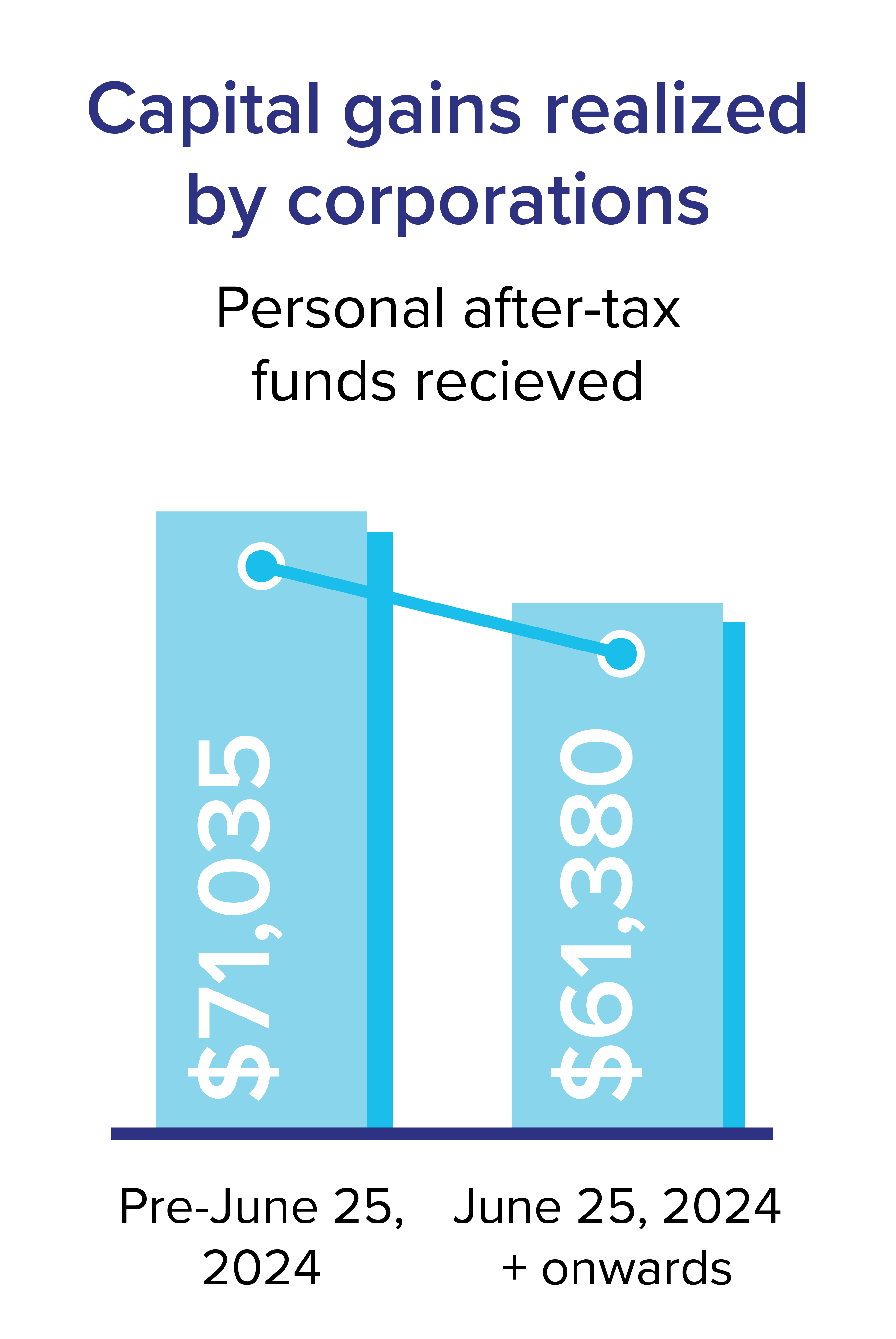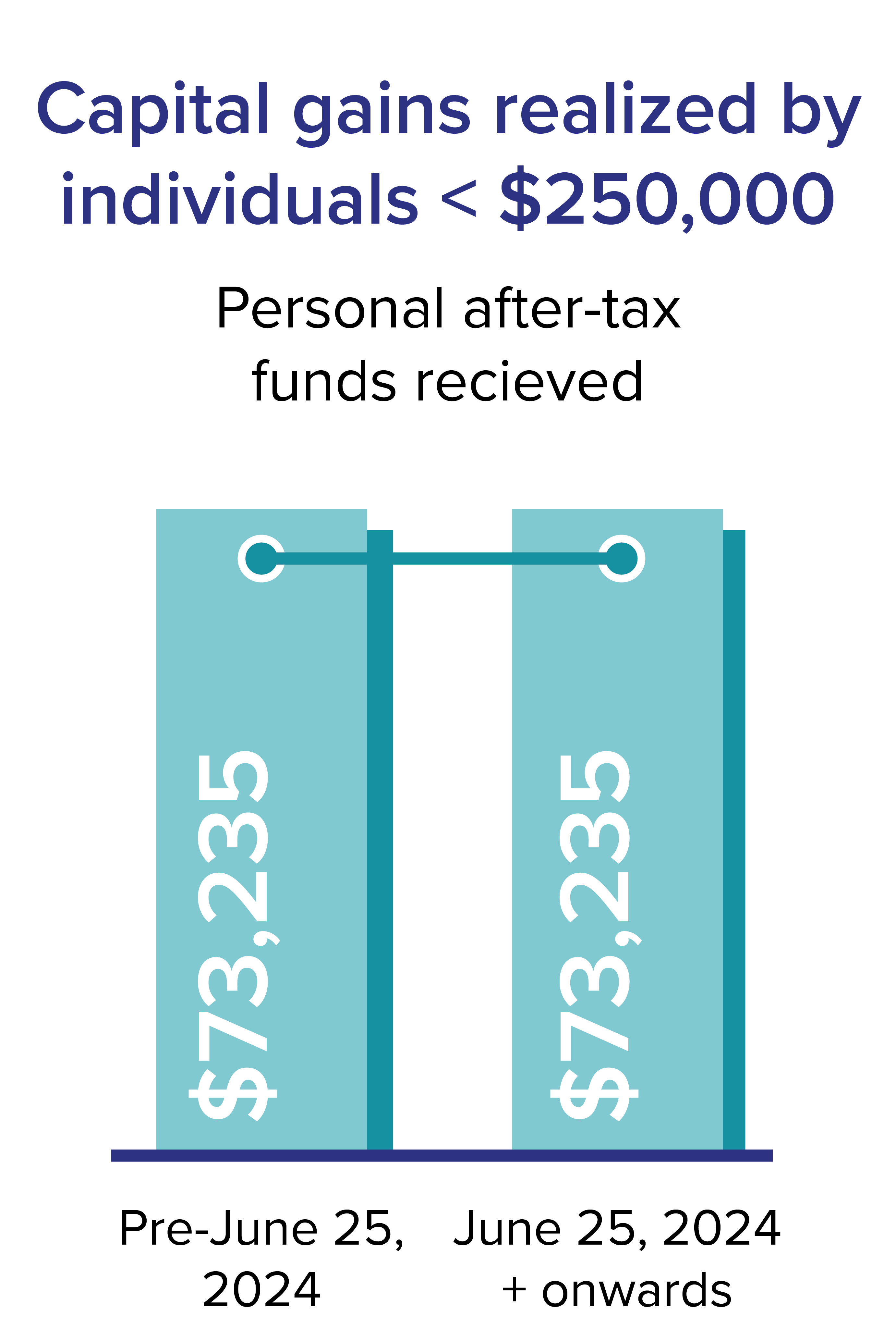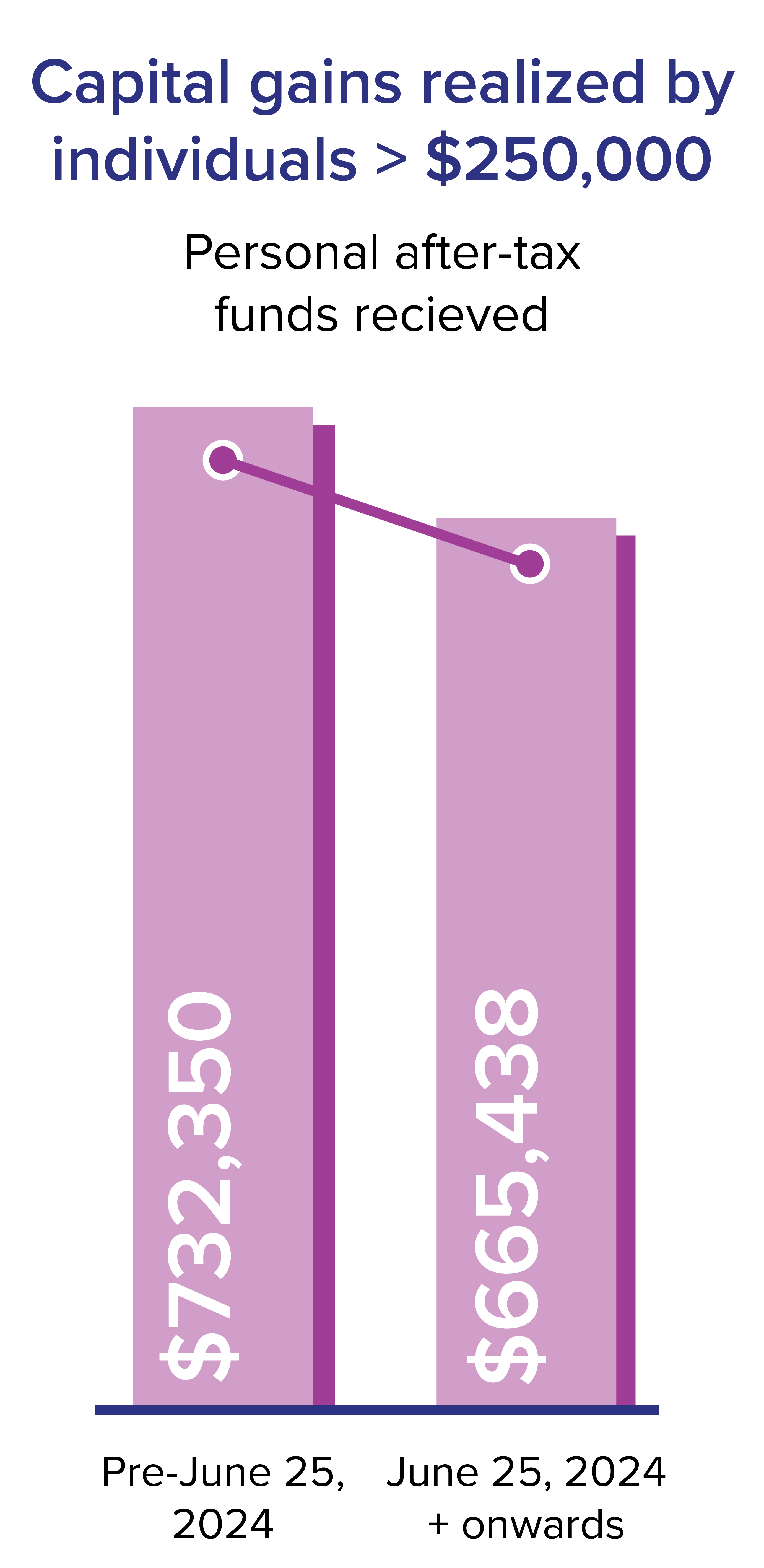The 2024 federal budget was delivered by Chrystia Freeland, deputy prime minister and minister of finance, on April 16, 2024.
This article will provide background on the increase in the capital gains inclusion rate from 50 per cent to 66.67 per cent and how it will impact physicians in Ontario.
Draft legislation was released on June 10, 2024, for the capital gains inclusion rate change, however the government announced that updated draft legislation will be forthcoming. The full implications of this announced rule change will not be known until legislation is finalized and passed into law.
The capital gains inclusion rate has increased from 50 per cent to 66.67 per cent for corporations and most types of trusts for capital gains realized on or after June 25, 2024.
Additionally, for individuals and select types of trusts, the inclusion rate also rose from 50 per cent to 66.67 per cent on the portion of capital gains exceeding a $250,000 threshold realized in a year.
Ontario doctors that realize a capital gain in their professional corporation will pay approximately 9.65 per cent more income tax on capital gains realized on or after June 25, 2024.
For example, Dr. A wholly owns shares of A Professional Corporation (“APC”). APC sells a marketable security and incurs a capital gain of $100,000. Dr. A will pay additional combined personal and corporate income tax of $9,655 (or $3,250 corporate income tax plus $6,405 personal income tax; see chart below for additional detail) for selling the marketable security on or after June 25, 2024, compared to if the marketable security was sold prior to this date. This is because APC will pay more corporate income tax with the higher capital gains inclusion rate, leaving less cash available to pay as dividends to Dr. A. As well, APC cannot pay as high of a tax-free capital dividend to Dr. A with the increased capital gains inclusion rate. In addition, Dr. A will pay more personal income tax because a higher taxable dividend will need to be paid from APC to extract all of the marketable security sale proceeds after corporate income tax has been paid. This is illustrated as follows:
| Pre-June 25, 2024 | June 25, 2024 + Onwards | ||
|---|---|---|---|
| Capital gain realized by corporation | $100,000 | $100,000 | |
| Inclusion rate | 50.00% | 66.67% | |
| Taxable capital gain | 50,000 | 66,667 | |
| Corporate income tax | (9,750) | (13,000) | |
| After-tax funds available | 90,250 | 87,000 | |
| Tax-free capital dividend | 50,000 | 33,333 | |
| Taxable dividend | 40,250 | 53,667 | |
| Personal income tax | (19,215) | (25,620) | |
| Personal after-tax funds received | 71,035 | 61,380 | |
|
Effective income tax rate |
28.97% |
38.62% |
|
|
Net tax cost |
9,655 |
The first $250,000 of capital gains realized by an individual in a particular year will remain taxable at a 50 per cent inclusion rate. Ontario doctors will therefore pay the same income tax when realizing a capital gain on or after June 25, 2024 than they would have paid if they realized a capital gain before June 25, 2024 if the total capital gains realized in a particular year is less than $250,000. This can be illustrated as follows:
| Pre-June 25, 2024 | June 25, 2024 + Onwards | ||
|---|---|---|---|
| Capital gain realized by individual | $100,000 | $100,000 | |
| Inclusion rate on first $250,000 | 50.00% | 50.00% | |
| Inclusion rate on > $250,000 | 50.00% | 66.67% | |
| Taxable capital gain | 50,000 | 50,000 | |
| Personal income tax | (26,765) | (26,765) | |
| Personal after-tax funds received | 73,235 | 73,235 | |
|
Effective income tax rate |
26.77% |
26.77% |
|
|
Net tax cost |
0 |
Ontario doctors that realize total capital gains of greater than $250,000 in a particular year will pay additional personal income tax on or after June 25, 2024, compared to if they realized capital gains prior to this date. The amount of income tax paid will depend on the total amount of capital gains incurred in a particular year because the first $250,000 of capital gains are subject to the 50 per cent inclusion rate whereas the capital gains beyond $250,000 are subject to the 66.7 per cent inclusion rate.
For example, Dr. Z personally owns the property in which they operate their medical practice. Dr. Z sells the property and incurs a capital gain of $1,000,000. Dr. Z will pay additional personal income tax of $66,912 for selling the property on or after June 25, 2024, compared to if the property was sold prior to this date. This is because the first $250,000 of the capital gain incurred by Dr. Z will be taxed with an inclusion rate of 50 per cent, whereas the remaining capital gain will be taxed with an inclusion rate of 66.67 per cent. This is illustrated as follows:
| Pre-June 25, 2024 | June 25, 2024 + Onwards | ||
|---|---|---|---|
| Capital gain realized by individual | $1,000,000 | $1,000,000 | |
| Inclusion rate on first $250,000 | 50.00% | 50.00% | |
| Inclusion rate on > $250,000 | 50.00% | 66.67% | |
| Taxable capital gain | 500,000 | 625,000 | |
| Personal income tax | (267,650) | (334,562) | |
| Personal after-tax funds received | 732,350 | 665,438 | |
|
Effective income tax rate |
26.77% |
33.46% |
|
|
Net tax cost |
66,912 |
The $250,000 threshold for the 50 per cent capital gains inclusion rate will apply to capital gains realized by an individual (not a corporation) in a year, either directly or indirectly via a partnership or trust, net of any current year capital losses.
The $250,000 threshold will also factor tax deductions taken for capital losses from other years applied to reduce capital gains in the current year, the Lifetime Capital Gains Exemption (LCGE), the employee ownership trust exemption and the Canadian Entrepreneurs’ Incentive exemption.
The $250,000 threshold for the 50 per cent capital gains inclusion rate does not apply to income earned by a trust unless the trust is a graduated rate estate trust or a qualified disability trust.
Recent changes to the Alternative Minimum Tax will also need to be considered when determining the amount of income tax payable by an individual who incurs a capital gain after June 25, 2024.
There are transition rules effective when capital gains are realized in 2024 whereas capital gains will need to be identified as being incurred before June 25, 2024 (Period 1) or being incurred on or after June 25, 2024 (Period 2) so that the applicable inclusion rate can be applied.
Lastly, taxpayers that incurred a capital gain in a prior year and were able to pay the income tax in future years (referred to as claiming a reserve), including 2024, because they were not paid in full at the time of sale need to review whether the 66.67 per cent inclusion rate will apply going forward.
Making smart decisions with your assets will require the advice of professionals to ensure you’re following the new legislation and choosing the best path for you. Join the professionals from MNP and the OMA at the Navigating capital gains tax: What you need to know webinar taking place Tuesday, July 16 from 7 to 8:30 p.m. to learn more and get the advice you need.
This article was submitted by Michael Saxe, CPA, CA, TEP, LL.M. and Nicholas Talarico, CPA, CA, Tax partners at MNP LLP. To learn more, Michael can be reached at 647-943-4120 or michael.saxe@mnp.ca and Nicholas can be reached at 780-733-8602 or nicholas.talarico@mnp.ca.


